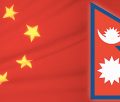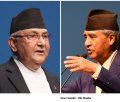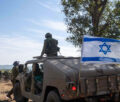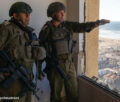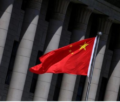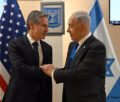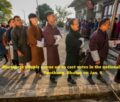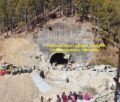US spy agencies paint grim picture of Afghan war

By Bill Van Auken
Two reports produced by US intelligence agencies sharply contradict the American military’s claims of success in the nine-year-old war in Afghanistan.
The National Intelligence Estimates on Afghanistan and Pakistan were recently presented in secret to members of the Senate and House intelligence committees. They represent the consensus view of Washington’s 16 separate intelligence agencies, led by the Central Intelligence Agency, the National Security Agency, the State Department and the various arms of military intelligence.
Coming on the eve of the formal presentation by the Obama White House of its review of the US policy in Afghanistan and Pakistan, the reports stand in sharp contradiction to the rosy estimates being peddled by the US military.
This month marks one year since President Barack Obama, in a speech at West Point, ordered his military “surge” in Afghanistan. This escalation saw the deployment of 30,000 more US troops into the impoverished, war-torn country, bringing the total US force there to nearly 100,000. Another 50,000 NATO and other foreign troops are participating in the US-led colonial-style war.
On Tuesday, President Obama signed off on a report prepared by Gen. David Petraeus, the top US military commander in Afghanistan, which claims that the escalation of the war has proved successful.
Previewing the report, which will be formally presented by the president today, White House spokesman Robert Gibbs said Wednesday, “There has been some important progress in halting the momentum of the Taliban in Afghanistan.” He also claimed that the US has “seen greater cooperation over the course of the past 18 months, with the Pakistani government.”
According to unnamed senior government officials quoted in the New York Times and the Los Angeles Times on Wednesday, however, US intelligence agencies challenge the veracity of such claims.
“The classified intelligence reports contend that large swaths of Afghanistan are still at risk of falling to the Taliban, according to officials who were briefed on the National Intelligence Estimates,” the Los Angeles Times reported.
The paper also reported that the reports, presented at a closed-door hearing of the Senate Intelligence Committee recently, state that the Pakistani government “remains unwilling to stop its covert support for members of the Afghan Taliban who mount attacks against US troops from the tribal areas of the neighboring country.”
According to the New York Times, the reports conclude that “there is a limited chance of success unless Pakistan hunts down insurgents operating from havens on its Afghan border.”
The Washington Post carried an article Wednesday indicating that the administration’s own review, at least in regard to Pakistan, appears to concur in part with the intelligence estimates. It quoted an official familiar with the review as stating that Pakistan has not “fundamentally changed its strategic calculus” regarding the use of the country’s Federally Administered Tribal Areas by armed Afghan opposition groups as sanctuary.
The Pakistani military and intelligence apparatus has longstanding ties to the Taliban, which it views as a counterweight to the attempt by its regional rival, India, to exert its influence in Afghanistan.
The logic of this shared assessment of the role played by Pakistan is the escalation of US pressure on the government in Islamabad and the increasing extension of the US military intervention into Pakistani territory.
White House spokesman Gibbs advised that the results of the policy review will “not surprise” anyone who has been familiar with the administration’s policies.
Indeed, the long-awaited review has become virtually a non-event. The Obama administration already spelled out its intentions at the NATO summit in Lisbon last month, where it embraced a new timeline that effectively jettisoned the pledge made by the US president last December to begin withdrawing US troops from Afghanistan in July of 2011.
The new deadline embraced in Lisbon is the end of 2014 when, supposedly, Afghan security forces would be capable of taking over most combat operations in the country. July 2011 will, at most, see a token withdrawal, that will leave the bulk of US forces in the country. And military commanders have indicated that they expect American troops to remain in Afghanistan well past 2014.
The inability of the Obama administration to hold off announcing this new policy until its policy review was formally presented is indicative of the crisis gripping the US enterprise in Afghanistan, and in particular the fear that any illusion that Washington planned a major withdrawal by next year would only strengthen the Taliban and other armed opposition groups.
The extreme sensitivity of the US military to any questioning of its claims of success was expressed in the Pentagon’s reaction to the National Intelligence Estimates.
Both the New York Times and the Los Angeles Times quoted an unnamed senior Pentagon official as dismissing the intelligence reports as out-of-date and irrelevant, having been produced by Washington bureaucrats unfamiliar with the situation on the ground in Afghanistan.
“They are not on the ground living it day in and day out like our forces are, so they don’t have the proximity and perspective,” the official told the Times.
But, as the New York Times pointed out, the CIA has built its largest station since the Vietnam War in Kabul and is commanding secret armies and death squads that number in the thousands in Afghanistan.
The Los Angeles Times article included an angry retort from an unnamed senior intelligence official. “The notion that intelligence officers aren’t on the ground in Afghanistan and on the front lines in the fight against terrorism is preposterous,” he said.
This kind of backbiting within the US military-intelligence apparatus is symptomatic of the crisis atmosphere pervading the entire imperialist venture in Afghanistan.
The military’s claims of progress in Afghanistan are linked to what is referred to by the Pentagon as the rise in “kinetic activity,” i.e., the escalating use of deadly force that has accompanied the Obama surge. It has resurrected the discredited method of “body counts,” claiming, for example, to have killed 952 “insurgents” during a 90-day period ending December 2. Many of these were the victims of special forces death squads, which have frequently assassinated unarmed civilians in the course of controversial night raids.
The US military has also sharply escalated the use of aerial bombardment, having dropped 5,465 bombs and missiles on Afghanistan in the first 11 months of this year. This already considerably outpaces the 4,184 that were dropped in all of 2009.
Now, for the first time, the Pentagon is bringing heavy battle tanks into Afghanistan, a move that will significantly increase the US military’s firepower and the overall carnage.
The predictable result of this increased violence is a rise in civilian casualties, a sharp deterioration in economic and social conditions and growing popular anger against the foreign occupation.
More than 2,400 civilians have been killed in Afghanistan between the months of January and September alone, the most intense bloodshed since the US invaded the country in 2001. The UN Assistance Mission in Afghanistan reported a 31 percent rise in civilian casualties for the first six months of this year compared to the same period in 2009.
In the latest incident, NATO acknowledged on Wednesday that it is investigating a bombing by a US warplane in the Marjah district of Helmand province in which an Afghan civilian was killed and two children were wounded. “We are here to protect the Afghan people and initial indications are that in this case we may have failed,” a military spokesman said. Marjah was supposedly one of the “success” stories after the US Marines carried out a major offensive there earlier this year.
The International Committee of the Red Cross organized a press conference in Kabul Wednesday to decry what the agency said was the worst violence it has seen in Afghanistan in 30 years.
The proliferation of armed groups threatens the ability of humanitarian organizations to access those in need,” said Reto Stocker, head of the ICRC in Afghanistan. “Access for the ICRC has over the last 30 years never been as poor.”
Stocker said that the agency had called the press conference because it is “extremely concerned of yet another year of fighting with dramatic consequences for an ever-growing number of people in by now almost the entire country.” While the US has concentrated its surge in the southern provinces of Helmand and Kandahar, the Red Cross representative said that the growth of the insurgency had cut off its access to the previously peaceful north of the country.
This assessment was shared by a group of aid workers and others working in Afghanistan who addressed an open letter to President Obama last week.
The situation on the ground is much worse than a year ago because the Taliban insurgency has made progress across the country,” they wrote. “It is now very difficult to work outside the cities or even move around Afghanistan by road. The insurgents have built momentum, exploiting the shortcomings of the Afghan government and the mistakes of the coalition.”
The growing hostility of the Afghan people to the US occupation produced by the Obama surge found expression in a poll conducted earlier this month by the Washington Post, ABC News, the British Broadcasting Corporation and Germany’s ARD television.
The survey found that more than half of the Afghan population wants the US and other foreign forces to begin their withdrawal by mid-2011, if not immediately. Three-quarters of those surveyed supported negotiations between the Afghan government and the Taliban, the insurgent force that the US military is attempting to annihilate. And support for the Taliban in Kandahar province, the main focus of the ongoing US surge, has increased markedly, with 45 percent saying that they view the movement favourably.
Given the inherent dangers in expressing hostility to the US occupation and support for the Taliban, there is no doubt that the poll is a pale indication of both the popular outrage over the US military offensive and the level of support for the armed groups fighting against the occupation. wsws.org
-
Book Shelf
-
 Book Review
DESTINY OF A DYSFUNCTIONAL NUCLEAR STATE
Book Review
DESTINY OF A DYSFUNCTIONAL NUCLEAR STATE
- Book ReviewChina FO Presser Where is the fountainhead of jihad?
- Book ReviewNews Pak Syndrome bedevils Indo-Bangla ties
- Book Review Understanding Vedic Equality….: Book Review
- Book Review Buddhism Made Easy: Book Review
- Book ReviewNews Elegant Summary Of Krishnamurti’s teachings
- Book Review Review: Perspectives: The Timeless Way of Wisdom
- Book ReviewNews Rituals too a world of Rhythm
- Book Review Marx After Marxism
- Book Review John Updike’s Terrorist – a review
-
-
Recent Top Post
-
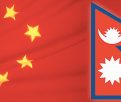 Commentaries
Impasse over BRI Projects in Nepal
Commentaries
Impasse over BRI Projects in Nepal
-
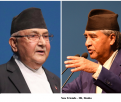 CommentariesNews
Yet another Musical Chairs in Kathmandu
CommentariesNews
Yet another Musical Chairs in Kathmandu
-
 CommentariesTop Story
Spurt in Anti-India Activities in Canada
CommentariesTop Story
Spurt in Anti-India Activities in Canada
-
 NewsTop Story
Nepal: Political Stability Under Threat Again
NewsTop Story
Nepal: Political Stability Under Threat Again
-
 NewsTop Story
Accountability Tryst With 2024 Ballot….
NewsTop Story
Accountability Tryst With 2024 Ballot….
-
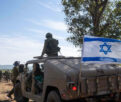 NewsTop Story
What Would “Total Victory” Mean in Gaza?
NewsTop Story
What Would “Total Victory” Mean in Gaza?
-
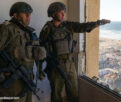 CommentariesTop Story
The Occupation of Territory in War
CommentariesTop Story
The Occupation of Territory in War
-
 CommentariesTop Story
Pakistan: Infighting in ruling elite intensifies following shock election result
CommentariesTop Story
Pakistan: Infighting in ruling elite intensifies following shock election result
-
 CommentariesTop Story
Proforma Polls in Pakistan Today
CommentariesTop Story
Proforma Polls in Pakistan Today
-
 CommentariesTop Story
Global South Dithering Away from BRI
CommentariesTop Story
Global South Dithering Away from BRI
-
AdSense code


